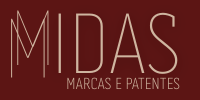Introduction
A trademark is a distinctive sign that identifies and differentiates a brand’s products or services in the marketplace. Registering a trademark with the National Institute of Industrial Property (INPI – Instituto Nacional da Propriedade Industrial) in Brazil ensures exclusive rights to use the mark, preventing competitors from unauthorized use.
However, not all trademarks are the same. Businesses can register different types of trademarks depending on how they intend to use them. Understanding these categories is crucial for selecting the right type of trademark protection.
This article explores the various types of trademarks that can be registered, their characteristics, and how businesses can choose the best option for their brand.
Why Register a Trademark?
Before discussing trademark types, it’s essential to understand the benefits of trademark registration:
- Legal Protection: Ensures exclusive rights to use the brand.
- Brand Recognition: Differentiates a business from competitors.
- Prevention of Unauthorized Use: Stops other companies from copying the brand.
- Business Value Growth: A registered trademark can be licensed, franchised, or sold.
Types of Trademarks That Can Be Registered
In Brazil, trademarks are categorized based on their form and function. The main types include:
1. Wordmark (Marca Nominativa)
A wordmark consists only of words, letters, or numbers without any graphic elements or specific stylization.
✅ Example:
- Nike
- Coca-Cola
- Amazon
Advantages of Wordmarks:
- Provides broad protection for the brand name, regardless of font or design.
- Easier to use across different branding materials.
- Stronger legal protection against similar names.
2. Figurative Mark (Marca Figurativa)
A figurative mark consists of a symbol, drawing, or logo without any words.
✅ Example:
- Apple’s bitten apple logo
- McDonald’s golden arches
- Mercedes-Benz three-point star
Advantages of Figurative Marks:
- Protects the visual identity of the brand.
- Useful when a logo is strongly recognizable without text.
- Ideal for international branding where symbols are more universal.
3. Combined Mark (Marca Mista)
A combined mark includes both text and graphical elements, such as a logo with a brand name.
✅ Example:
- Starbucks logo with the name
- Burger King’s name inside its logo
- Adidas logo with text
Advantages of Combined Marks:
- Protects both the brand name and logo in one registration.
- Offers stronger brand identity and visual recognition.
- Prevents unauthorized changes to the text or graphic elements.
4. Three-Dimensional Mark (Marca Tridimensional)
A three-dimensional mark protects the unique shape of a product or its packaging.
✅ Example:
- Coca-Cola’s curved bottle
- Toblerone’s triangular chocolate shape
- Perfume bottle designs
Advantages of Three-Dimensional Marks:
- Ensures exclusivity for unique product designs.
- Provides an additional layer of brand differentiation.
- Useful for industries where product shape influences consumer perception.
5. Sound Mark (Marca Sonora)
A sound mark protects distinctive jingles, tones, or melodies associated with a brand.
✅ Example:
- Intel’s startup chime
- Netflix’s “Tudum” sound
- McDonald’s “I’m Lovin’ It” jingle
Advantages of Sound Marks:
- Ideal for radio, television, and digital marketing.
- Strengthens brand recognition through audio branding.
- Protects unique sounds that consumers associate with a brand.
6. Color Mark (Marca de Cor)
A color mark protects a specific color or color combination uniquely linked to a brand.
✅ Example:
- Tiffany’s signature blue box
- John Deere’s green and yellow tractors
- Cadbury’s purple chocolate packaging
Advantages of Color Marks:
- Prevents competitors from using similar color branding.
- Strengthens brand identity through visual recognition.
- Useful in industries where colors strongly influence consumer perception.
7. Collective Mark (Marca Coletiva)
A collective mark is used by associations or organizations to indicate that products/services come from members of a specific group.
✅ Example:
- “100% Brazilian Coffee” seal (used by Brazilian coffee producers)
- Wine certification labels for specific wine regions
- Fair Trade certification
Advantages of Collective Marks:
- Ensures quality standards for members.
- Helps consumers recognize authentic products.
- Strengthens group branding and industry credibility.
8. Certification Mark (Marca de Certificação)
A certification mark guarantees that a product or service meets specific quality, origin, or technical standards.
✅ Example:
- ISO 9001 Quality Certification
- Organic product labels
- Woolmark for 100% pure wool
Advantages of Certification Marks:
- Provides consumer confidence in quality and authenticity.
- Differentiates certified products from competitors.
- Used to ensure compliance with industry regulations.
Choosing the Right Trademark Type
To determine the best trademark type for a business, consider:
- What elements of your brand need protection? (Name, logo, sound, shape, etc.)
- How is your brand represented in marketing?
- Do you plan to expand internationally?
Common Mistakes to Avoid When Registering a Trademark
- Choosing a Generic Name – Common words or phrases may not be eligible for trademark protection.
- Skipping a Trademark Search – Always check INPI’s database to ensure the name/logo is available.
- Not Registering the Right Classification – Trademarks must be registered under the correct Nice Classification (NCL).
- Ignoring Visual or Sound Elements – If a brand relies heavily on a logo or jingle, consider registering those separately.
Conclusion
Registering a trademark is an essential step in protecting a brand’s identity and ensuring legal exclusivity. Different types of trademarks provide various levels of protection, depending on whether a business wants to secure its name, logo, sound, shape, or certification.
By choosing the right trademark type, businesses can strengthen their market position, prevent competitors from unauthorized use, and build a valuable, recognizable brand for long-term success.

